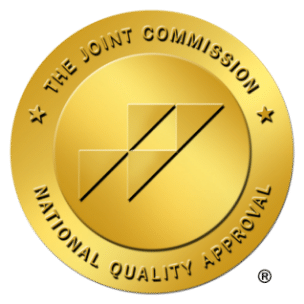In recent years, Trauma-Informed Yoga (TIY) has gained recognition as a powerful complementary therapy for individuals recovering from trauma. Traditional talk therapy, while effective, can sometimes feel overwhelming for trauma survivors, particularly those with complex trauma histories. Trauma-Informed Yoga, rooted in neuroscience and mindfulness, provides a body-centered approach that allows individuals to reconnect with themselves in a safe and structured way.
The Science Behind Trauma and the Body
Dr. Bessel van der Kolk, in his groundbreaking book The Body Keeps the Score, explains how trauma is stored in the body. Unlike everyday stressors, traumatic experiences alter the brain’s neural pathways, particularly in areas associated with fear, memory, and emotional regulation. Trauma can lead to chronic dysregulation of the autonomic nervous system, making it difficult for survivors to feel safe in their bodies.
This is where Trauma-Informed Yoga can be life-changing. Unlike traditional yoga, TIY is specifically designed to help individuals regain a sense of control, safety, and self-awareness. Through mindful movement, breathwork, and structured choice-making, individuals can re-establish a connection with their bodies and regulate their nervous systems.
Trauma-Sensitive Yoga and EMDR Therapy
As highlighted in the Trauma-Sensitive Yoga: A Complementary Therapy for EMDR article, many individuals with PTSD experience difficulty fully engaging in trauma processing therapies like Eye Movement Desensitization and Reprocessing (EMDR). EMDR is a highly effective therapy for trauma but can be emotionally intense, leading to high dropout rates. Integrating Trauma-Sensitive Yoga (TSY) into EMDR therapy can improve treatment adherence by helping clients develop greater emotional regulation and distress tolerance before engaging in trauma processing.
TSY was developed in part by David Emerson and Dr. Bessel van der Kolk through the Trauma Center at the Justice Resource Institute.
This approach emphasizes:
- Boundaries: Creating a physically and emotionally safe space for participants.
- Choice: Using invitational language, allowing individuals to engage at their own comfort level.
- Language: Avoiding directive or potentially triggering instructions.
- Environment: Designing a calm, structured setting to promote safety and relaxation.
- Postures: Offering variations and avoiding poses that may evoke vulnerability.
How Trauma-Informed Yoga Works
Unlike traditional yoga, Trauma-Informed Yoga prioritizes safety and autonomy. Instructors avoid hands-on adjustments, encourage participants to listen to their bodies, and use neutral, non-triggering language. The goal is not to achieve perfect poses but to foster self-awareness and emotional balance.
Key benefits of Trauma-Informed Yoga include:
- Regulating the Nervous System: Yoga and breathwork activate the parasympathetic nervous system, helping to shift individuals from a fight-or-flight state into relaxation.
- Enhancing Emotional Awareness: By focusing on bodily sensations, participants develop greater awareness of their emotions and learn to self-regulate.
- Reducing PTSD Symptoms: Studies show that TSY can significantly decrease PTSD symptoms, including hyperarousal, dissociation, and emotional numbness.
- Encouraging Mindfulness and Presence: Yoga teaches participants to stay present in the moment, a core skill in trauma recovery.
Integrating Trauma-Informed Yoga into Therapy
Therapists don’t need to be yoga instructors to incorporate Trauma-Informed Yoga techniques into their practice. Simple breathwork, mindfulness exercises, and grounding techniques can be powerful tools. Some EMDR therapists integrate breathing exercises like diaphragmatic breathing or alternate-nostril breathing in early EMDR phases to help clients manage distress more effectively.
For those looking to deepen their practice, various training programs, such as the Trauma Center Yoga Program, offer specialized certification in TSY. Additionally, resources such as the MET(T)A Protocol, which combines EMDR with Buddhist mindfulness principles, provide innovative approaches for integrating trauma-informed practices into clinical work.
Final Thoughts
Trauma-Informed Yoga is more than just an exercise—it’s a holistic approach to healing that acknowledges the deep mind-body connection. By integrating principles of safety, mindfulness, and choice, TIY offers trauma survivors a pathway to reclaim their bodies and emotions in a compassionate and empowering way.
As The Body Keeps the Score emphasizes, healing from trauma requires more than intellectual insight. The body must also learn that it is safe. Trauma-Informed Yoga provides a bridge between mind and body, allowing survivors to move from mere survival to genuine healing.
Sources:
- Van der Kolk, B. (2014). The Body Keeps the Score: Brain, Mind, and Body in the Healing of Trauma. Penguin Books.
- Schnur, O. (2021). Trauma-Sensitive Yoga: A Complementary Therapy for EMDR. Changing Lives (Go With That Magazine Conference Edition). EMDR International Association.
- Emerson, D., Hopper, E., & Van der Kolk, B. (2009). Overcoming Trauma Through Yoga: Reclaiming Your Body. North Atlantic Books.
- Woodyard, C. (2011). Exploring the therapeutic effects of yoga and its ability to increase quality of life. International Journal of Yoga, 4(2), 49-54.
- Justice, L., Brems, C., & Ehlers, K. (2018). Bridging body and mind: Considerations for trauma-informed yoga. International Journal of Yoga Therapy, 28.



